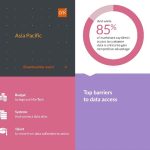Httpool recently launched a paper, Tune into Digital Audio in 2021, aimed at helping brands and marketers streamline and improve their digital audio advertising plans for the year.
The paper outlines how and why businesses should integrate a mobile business strategy into their marketing strategy in today’s market.
“When you advertise on digital audio channels, you reach people who are doing and thinking things they wouldn’t do or think if they were exposed to more congested marketing channels,” said Managing Director of Httpool India, Amit Gupta. “Digital audio allows advertisers to access the listening experience, where there is less competition (and) audio should be approached holistically, blending in with all other formats along the user’s path.”
The following is a section from the ‘Tune into Digital Audio in 2021’ paper which analyses emerging trends in digital audio advertising:
Advertisers are following in the footsteps of customers who are flocking to digital audio, and we’ve already seen a few major growth patterns in the field of digital audio advertising.
The audio format is an exciting new frontier for all brands to explore.
Regardless, all brands must decide if audio media purchases are the right fit for their company and, if so, how to maximize their effectiveness. Consider the following trends when thinking about your brand before deciding to advertise in the digital audio room.
Programmatic Advertising
Audio ad automation, also known as programmatic advertising, is a growing and significant factor. It automates the purchase, sale, and delivery of audio advertisements.
Spotify seems to be leading the way in programmatic ads, with programmatic revenues accounting for ¼ of its ad revenue.
Personalization And Context-Awareness
This can be achieved in a variety of ways, either programmatically or manually.
Whatever format is used, the aim is to create a highly customized and personalized campaign tailored to each user. Context-aware advertisements have a higher recall rate and stand out more. They also have a significantly higher level of interaction than conventional ads.
Acknowledge Data
Brands that use data-driven audio ads effectively can have a significant impact.
Since no two ads are alike, brands use data to build meaningful, dynamic, and hyper-personalized messages.
To deliver valuable and high-converting communications, they integrate user insights, location data, and other vital insights.
Voice Recognition And Smart Speakers
Smart speakers are available in a range of sizes and shapes.
Amazon Echo and Google Home are the most common. According to “The Smart Audio Study,” nearly a quarter of the population in the United States (over 60 million) owns a smart speaker, and 24% of them use it regularly.
In 2020, there will be 4.2 billion digital voice assistants being used in devices around the world. Forecasts suggest that by 2024, the number of digital voice assistants will reach 8.4 billion units – a number higher than the world’s population.
As a result, as user adoption grows, so does the advertising opportunity.
Smart speakers not only allow and accelerate the consumption of digital audio, but they also provide marketers and brands with a forward-thinking, creative outlet.
While smart speaker advertising is still in its infancy, brands keep a close eye on it to stay ahead of the competition, particularly as it proves to be a critical touchpoint for retail shoppers.
In 2021, according to EMarketer, 38 million people will use a smart speaker to make a purchase.
Like every other new medium or tactic, Audio should be approached holistically, blending in with all other formats along the user’s path. Search, social, television, video, and so on are examples of these formats. Audio ads should never be perceived as a stand-alone strategy; instead, they should integrate them into the brand’s overall digital strategy.
The power of audio ads is undeniable.
To download the full paper and for more insights on the opportunities within digital audio, visit: https://www.httpool.com/?post_type=case_studies&p=11768&preview=true
MARKETING Magazine is not responsible for the content of external sites.









